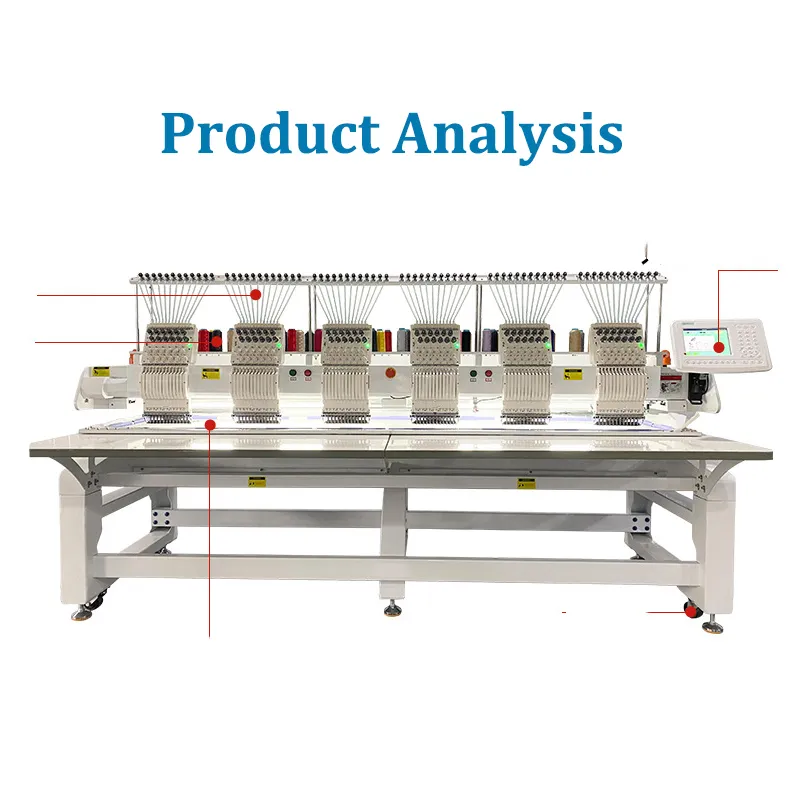Nov . 18, 2024 22:46 Back to list
Exploring the Art and Techniques of Machine Embroidery for Creative Projects
The Art of Machine Embroidery A Blend of Tradition and Technology
Machine embroidery is a fascinating art form that merges the fine craftsmanship of traditional needlework with modern technology. As an increasingly popular avenue for personalization and creativity, machine embroidery allows both hobbyists and professionals to create intricate designs on fabric with precision and ease. This article will explore the history, techniques, tools, and applications of machine embroidery, shedding light on why it has garnered a dedicated following globally.
Historically, embroidery has been a revered craft dating back thousands of years. Early techniques were labor-intensive, relying solely on handmade stitches and patterns. However, with the advent of sewing machines in the 19th century, a revolution began in the embroidery world. The introduction of specialized embroidery machines in the late 20th century transformed this craft by automating complex designs, thus making it more accessible to the average person.
Today, machine embroidery comes in two primary forms commercial and home embroidery. Commercial embroidery machines are built for high-volume production, making them ideal for businesses that require customized apparel, promotional products, or personalized gifts. On the other hand, home embroidery machines cater to hobbyists and crafters, often featuring user-friendly interfaces and built-in designs.
The core of machine embroidery lies in its techniques. At its most basic level, machine embroidery transforms digital embroidery files into thread patterns on fabric. The process typically begins with creating a digital design using specialized software, which can involve anything from simple monograms to elaborate patterns. This design is then loaded onto the embroidery machine, which stitches it onto the chosen fabric with remarkable speed and accuracy.
machine embroidery

Several techniques can be employed within machine embroidery, including applique, free-motion stitching, and digitized designs. Applique involves sewing a piece of fabric onto a base fabric, often resulting in a layered look, while free-motion stitching offers artists the ability to guide the fabric manually, allowing for a free-flowing and spontaneous design. Digitized designs, on the other hand, are created using intricate software programs that convert images into stitch data tailored for the machine’s specifications.
The tools and materials involved in machine embroidery are crucial to achieving high-quality results. Embroidery machines can range from simple, beginner models to advanced, multi-needle setups. Additionally, selecting the right threads and fabrics is essential. Rayon and polyester threads are commonly used due to their durability and sheen, while stabilizers help prevent fabric distortion during the stitching process.
Machine embroidery finds its applications across various sectors. Fashion designers often use it to embellish clothing, while businesses employ it for branding purposes through logo embroidery on uniforms and promotional merchandise. Additionally, it plays a significant role in home decor, with embroidered textiles enhancing the aesthetic appeal of cushions, curtains, and more. Furthermore, machine embroidery has carved a niche within the arts and crafts community, where enthusiasts create unique pieces for personal use or as gifts.
The resurgence of interest in handmade and personalized items has undoubtedly contributed to the popularity of machine embroidery. As individuals seek ways to express their creativity and style, this art form continues to evolve, integrating newer technologies like computer-aided design (CAD) and 3D embroidery. Ultimately, machine embroidery stands as a testament to the enduring appeal of combining art with technology, making it a beloved craft for generations to come. Whether for business, personal use, or artistic expression, machine embroidery offers endless possibilities to create beautiful, customized designs that resonate with people on a personal level.
-
Affordable 15-Needle Embroidery Machine with GPT-4 Turbo
NewsAug.02,2025
-
Affordable Commercial Embroidery Machines for Sale
NewsAug.01,2025
-
Top AI Embroidery Machine Manufacturers | GPT-4 Turbo Tech
NewsJul.31,2025
-
Affordable Computer Embroidery Machines | Best Prices
NewsJul.31,2025
-
Cheap T Shirt Printing Embroidery Machine with Multi Needle Efficiency
NewsJul.30,2025
-
High-Quality T Shirt Embroidery Machine – Multi & 12/15 Needle Options
NewsJul.30,2025

Copyright © 2025 Xingtai Pufa Trading Co., Ltd All Rights Reserved. Sitemap | Privacy Policy
